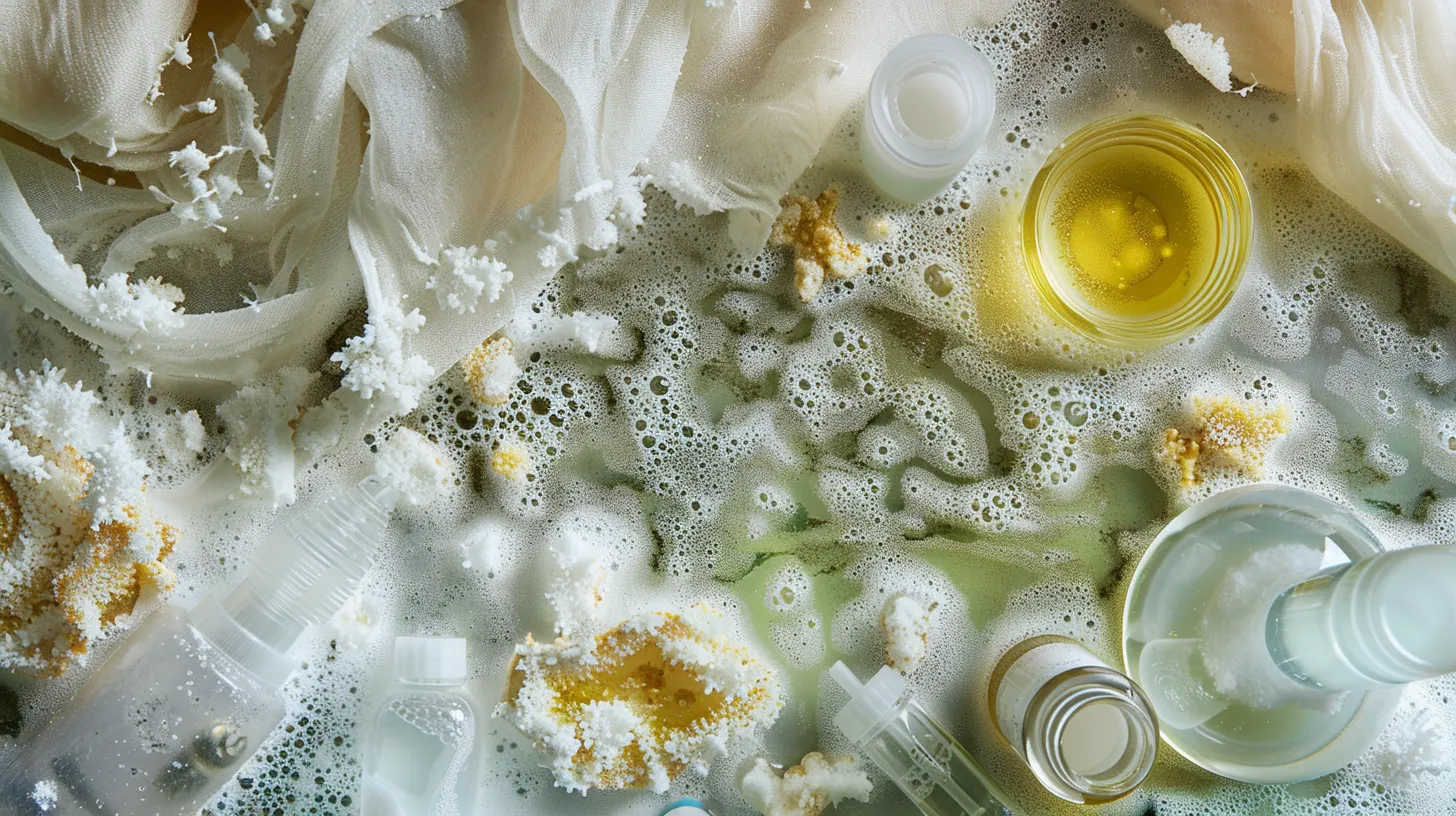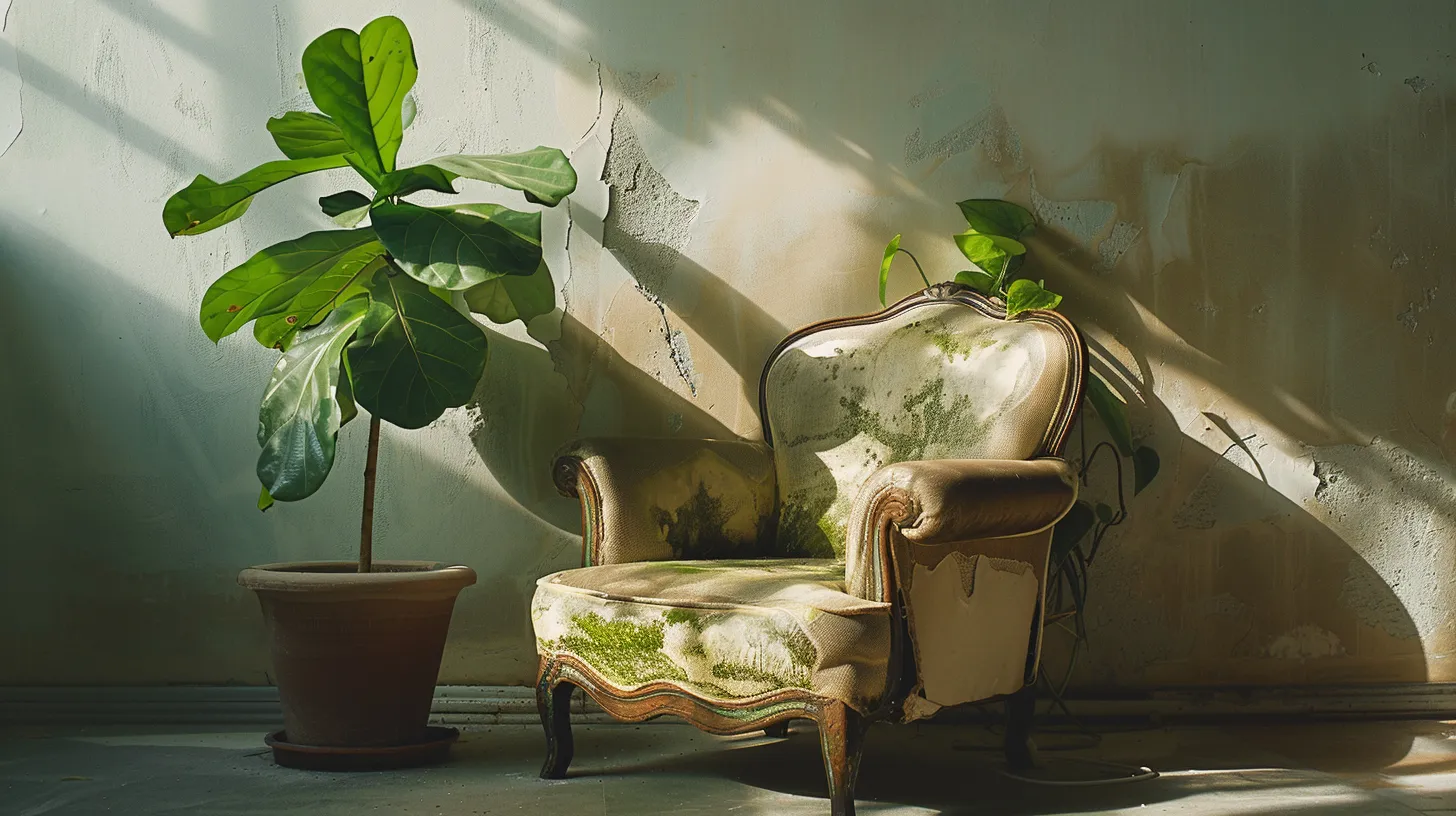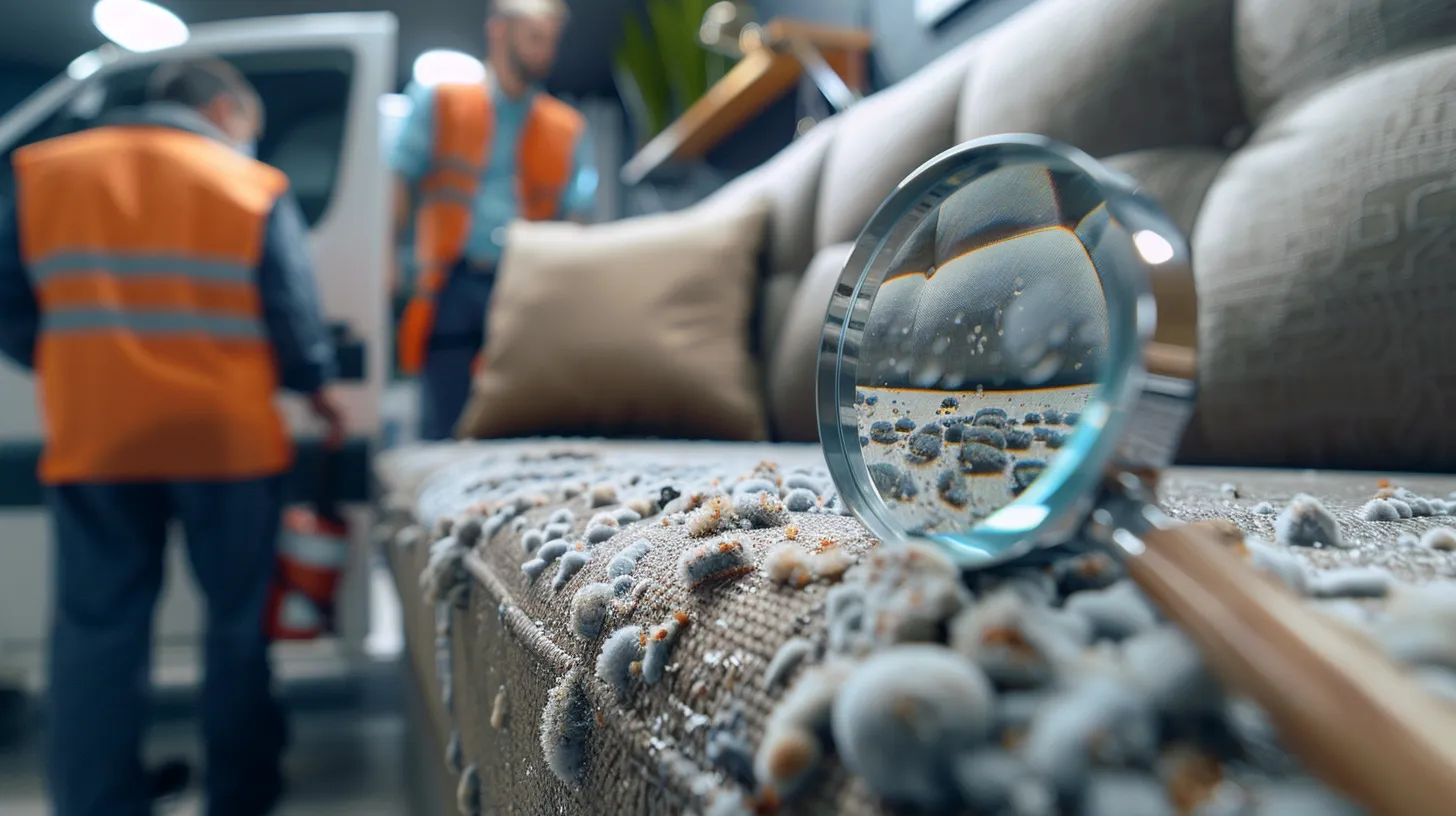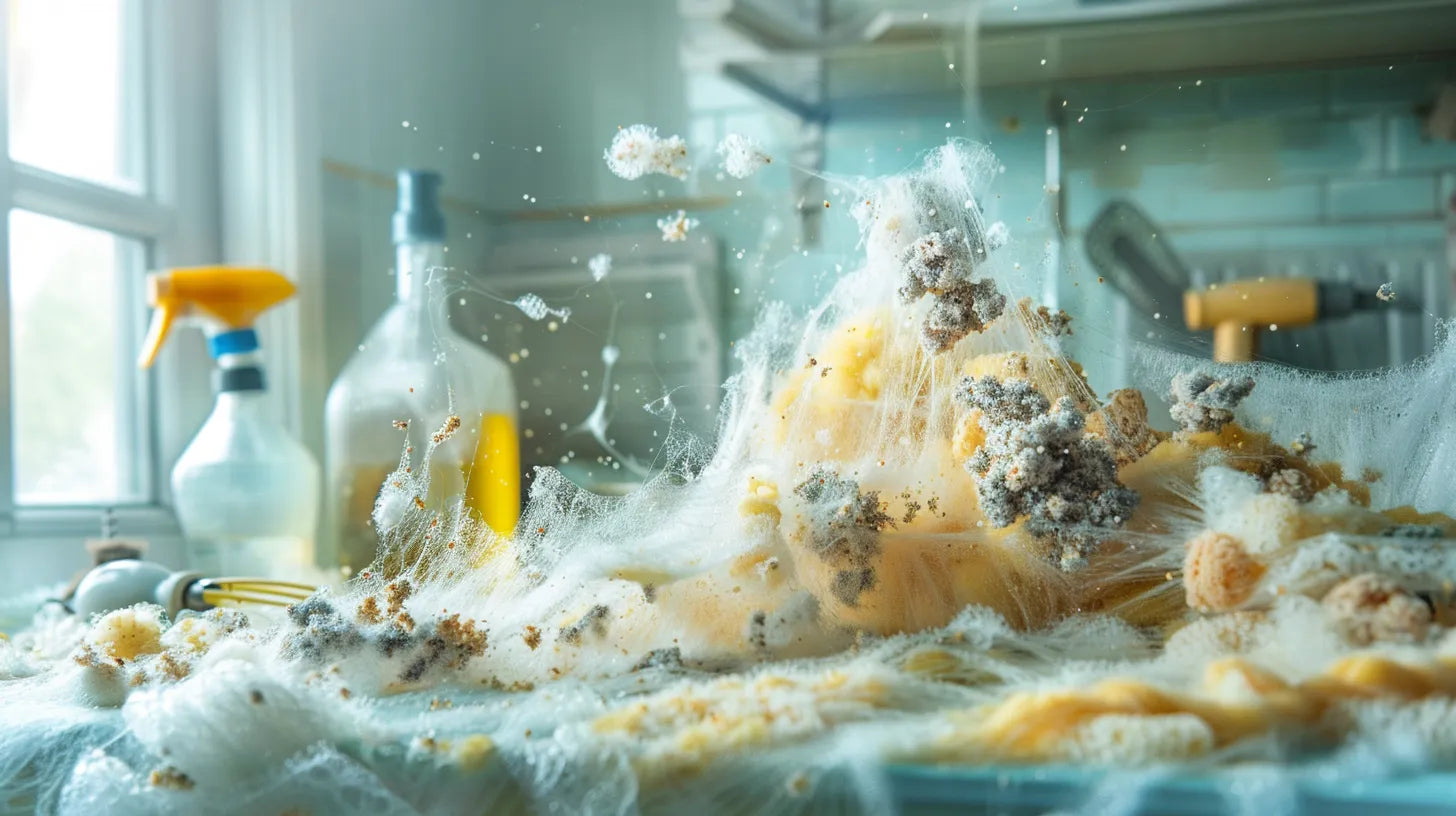The presence of mold in fabric chairs is not only unsightly but also poses significant health risks, underlining the importance of timely and effective removal.
While various natural and chemical solutions offer promise in addressing this issue, understanding the specific type of mold and the fabric's tolerance is paramount. Techniques such as using vinegar or baking soda mixtures have been widely advocated for their efficacy in mold removal.
However, discerning the most suitable method requires a nuanced approach, considering both the immediate impact on mold eradication and the long-term preservation of the fabric's integrity.
Engaging with this topic further unveils a spectrum of considerations critical for anyone facing mold challenges in their living spaces.
Understanding Mold

Mold, a microscopic fungal organism that flourishes in damp environments, poses significant health risks when it colonizes fabric chairs. Thriving in wet, humid conditions, mold can easily find a home in the upholstery of chairs if not properly maintained. To safeguard health and ensure a clean indoor environment, it's crucial to address mold growth promptly. Effective management involves a combination of regular cleaning, prevention strategies, and tackling the underlying causes of moisture accumulation.
To remove mold from fabric chairs, a solution of vinegar and water can be applied directly to the affected area, using a spray bottle for even distribution. Vinegar, a mild acid, works to kill the mold spores without damaging the fabric. After application, the area should be allowed to dry completely, as residual moisture can encourage further mold growth. For stubborn mold stains, Hydrogen Peroxide may be used as a stronger alternative, with care taken to test it on a small, inconspicuous area first to avoid potential discoloration.
Prevention is key in the battle against mold. Ensuring chairs are kept dry, improving air circulation, and reducing indoor humidity levels can significantly reduce the risk of mold taking hold in fabric upholstery. Regular cleaning and maintenance routines not only contribute to a healthier living space but also extend the life of fabric chairs.
Health Risks of Mold

Understanding the dangers associated with mold is critical for safeguarding health, as exposure can lead to a variety of adverse medical conditions. Mold exposure is not something to be taken lightly, given its potential to trigger allergic reactions, cause lung inflammation, and even damage nerve cells. These health risks highlight the importance of being vigilant about mold presence in one's environment.
Individuals with weakened immune systems are particularly vulnerable, facing a higher risk of severe health effects from mold exposure. This underscores the need for prompt action in cases of mold detection. Mold-related diseases are indiscriminate, affecting adults, children, and infants alike. Therefore, understanding these potential health risks is essential for everyone, regardless of age.
To mitigate these risks, proper prevention measures, alongside swift mold removal, are crucial steps. These actions are not just about addressing the immediate issue but also about protecting long-term well-being. Recognizing the health risks associated with mold exposure empowers individuals to take proactive steps. By prioritizing mold removal and implementing effective prevention measures, it is possible to protect well-being and prevent the onset of mold-related health complications.
Mold Prevention Tips

Preventing mold growth on fabric chairs requires strategic measures to ensure a clean and healthy environment. Mold thrives in damp, poorly ventilated areas, making prevention crucial for maintaining the integrity and appearance of your fabric chairs. By adopting a proactive approach, you can create a living space that not only looks great but is also free from the health risks associated with mold exposure.
-
Expose fabric chairs to fresh air and sunlight : Utilize natural sunlight and ventilation to deter mold growth, as sunlight acts as a natural disinfectant.
-
Clean mold outdoors : When removing mold, do it outdoors to prevent spreading spores inside your home.
-
Ensure proper ventilation : Promote air circulation around fabric chairs to reduce moisture accumulation.
-
Address leaks and spills promptly : Keep fabric chairs dry by quickly dealing with any source of water to prevent mold from taking root.
-
Use carpets or mats in damp areas : Place absorbent materials in moisture-prone areas to minimize dampness around fabric chairs.
Removing Mold Naturally

Several natural methods can be effectively utilized to remove mold from fabric chairs, ensuring a safe and clean environment. White vinegar stands out as a powerful, natural cleaning solution for tackling mold. Its acidic nature helps in breaking down mold spores, making it easier to clean mold from fabric surfaces. To use, simply apply white vinegar directly to the affected areas and allow it to sit for a few hours before wiping clean.
Sunlight exposure is another beneficial strategy in the fight against mold. Placing a moldy fabric chair in direct sunlight can help kill mold spores and prevent future mold growth, thanks to the sun's natural disinfecting properties.
For visible mold patches, using a brush attachment on a vacuum cleaner can help remove these unsightly spots. This method, combined with wiping down the area with a mixture of rubbing alcohol and water, can further ensure the mold is thoroughly cleaned from the fabric. It's important to allow the chair to air dry completely after cleaning to prevent mold from returning.
Additionally, maintaining a dry environment with the help of a dehumidifier can significantly prevent mold growth on fabric chairs, keeping them clean and safe for use.
When to Seek Professional Help

While many mold situations on fabric chairs can be handled with home remedies, there are circumstances where professional help becomes necessary. Cleaning the mold yourself might seem like a cost-effective solution, but without the proper techniques and tools, you risk spreading the mold spores further or damaging the chair. Moreover, DIY methods may not fully remove the mold, leading to potential health risks and recurring issues.
Here are scenarios when seeking professional assistance is advised:
- If the fabric chair is heavily water-damaged and very moldy, to prevent inhaling harmful spores while attempting to clean mold that is too far gone.
- Vintage or delicate fabric chairs require professional upholstery cleaning to avoid damage during mold removal.
- Fabrics like silk, silk blends, and pure wool should be taken to a dry cleaner to prevent damage from DIY mold removal methods.
- When highly acidic substances like vinegar or harsh chemicals could harm the chair's fabric, professionals can use the solution that won't damage the material.
- For valuable or delicate fabric chairs, professional mold removal services ensure safe and effective treatment to prevent mold and let it dry properly, avoiding further issues.










